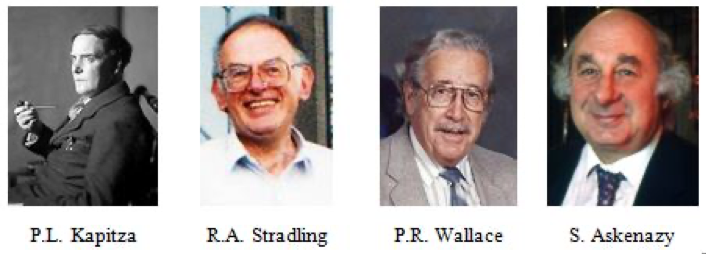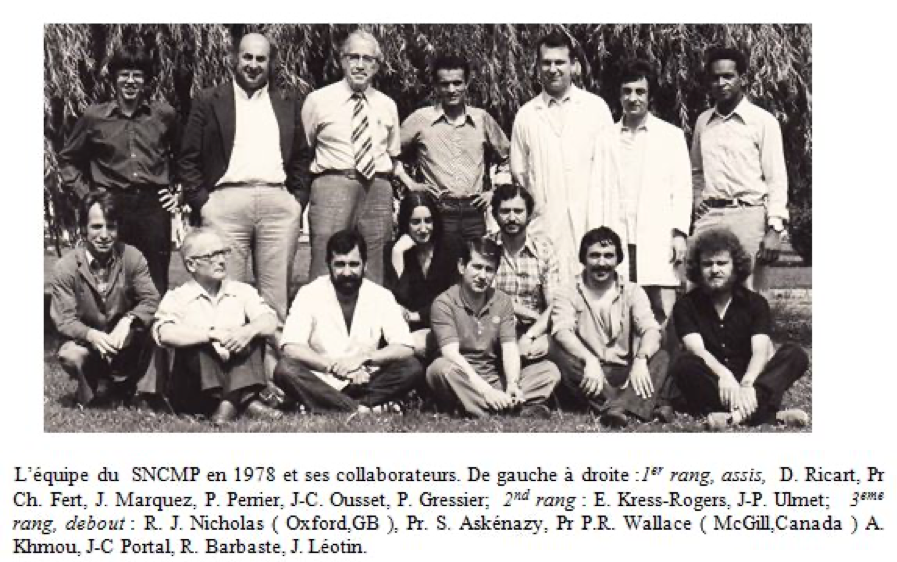Piotr Kapitza has demonstrated the possibility to reach large pulsed magnetic fields of up to 50T from the discharge of capacities in a copper coil, as soon as 1924 in te Cavendish laboratory of Cambridge. In 1965, S.Askénazy designs coils able to reach long duration pulses of up to 40 T in Toulouse. At the same time, he supervises the building of the pulse current generator by the G. Girald team of the LAAS, and he starts a cryogenics facility in the Paul Sabatier University. The research in pulsed magnetic field is developped thanks to efforts to improve the instrumentation, the electronics and cryogeny by J.Leotin, J.C.Portal and J-P.Ulmet. The first measurements concern the quantum magneto-transport and the cyclotron resonance in semiconductors, in strong interaction with J.Bock (ENS) and R.A.Stradling (Clarendon Laboratory, Oxford) as well as P.R.Wallace (McGill University in Montreal). The pulsed field of Toulouse allows researcher to perform accurate mesurements thanks to its long duration and damped vibrations. These performances are obtained with reinforced copper coils on which a capacitor bank of 100 kJ, 3 kV, is discharged using a new ignitron contactor inserted in a crow-bar circuit of power diodes.

After creating its continuous field facility in Grenoble, the CNRS funds the « Service National des Champs Magnétiques Pulsés » (SNCMP) at the Institut National des Sciences Appliquées in Toulouse. Under the direction of S.Askenazy, a new building and a new generator are built, as well as a new generation of coils and dewars. The generator reaches 1.25 MJ, 10kV and a piston-switch immersed in mercury is developed and build for the generator. In 1980 a switch with thyristors and optical fiber command is designed and used in the laboratory. This switch opens a technological solution to use the generators that will be later adopted worldwide, including in the recent 14 MJ, 24 kV generator in Toulouse. In 1987, a technological breakthrough in the design of copper coils reinforced with NbTi results in the production of 61 T during 0.1 s. With an increasing number of researchers, research activities expand and now include magnetism, superconductivity and organic conductors. A dilution refrigerator is made in order to reach the lowest temperatures in pulsed magnetic fields. The external user community expands and fruitfull national and international collaborations are established.

In 1990, S. Askénazy projects the extension of the SNCMP in a new building (the present LNCMI-Toulouse building) with the help of the CNRS, Toulouse university and INSA-Toulouse. The objective is to provide a european pulse magnetic field facility based on the 14MJ, 24kV generator and coils producing up to 60 T within 1 s. The SNCMP builds magnets and generators producing 30 T within 1 s in Porto, Saragosse and Mérida (Vénézuela). Finally, the new building is constructed to include the 14MJ, 24kv generator, and a in-house research lab and production workshop of new composite copper wires having low electrical resistivity and strong mechanical properties. During this decade, the SNCMP contributes to the studies of the european consortium for « Design studies for 100 T magnet ». It pushes for the concept of gigogne coils « coilin-coilex » supplied by distinct and synchronized generators (see this article also). Today, this concept is applied everywhere to reach 100 T in a non destructive way.
In 2000, the « Laboratoire National de Champs magnétiques Pulsés (LNCMP) is created as a mixed research unit of the CNRS, associated with the Toulouse university and INSA with Dominique Givord. Then, under the direction of Geert Rikken the fusion with the LCMI of Grenoble is decided in 2009 to form the LNCMI, Laboratoire National de Champs Magnétiques Intenses , associated with the University Joseph Fourier in Grenoble (now UGA), the Institut National des Sciences Appliquées and the University Paul Sabatier in Toulouse.
